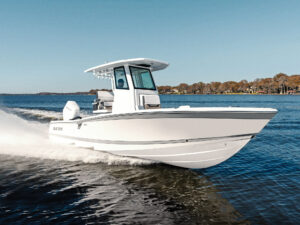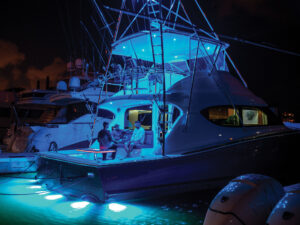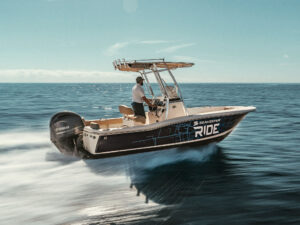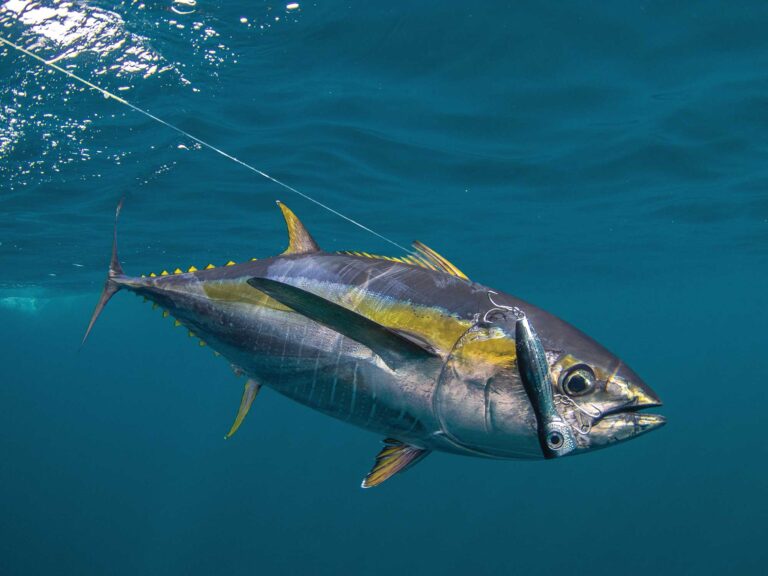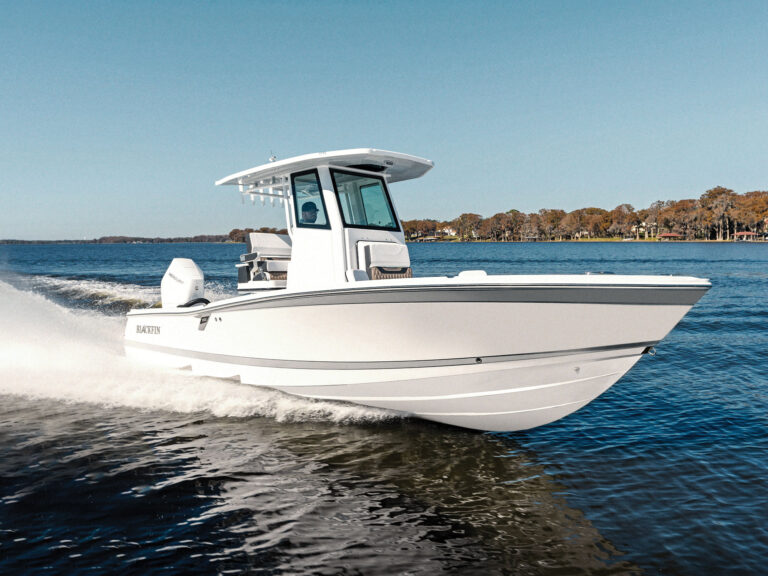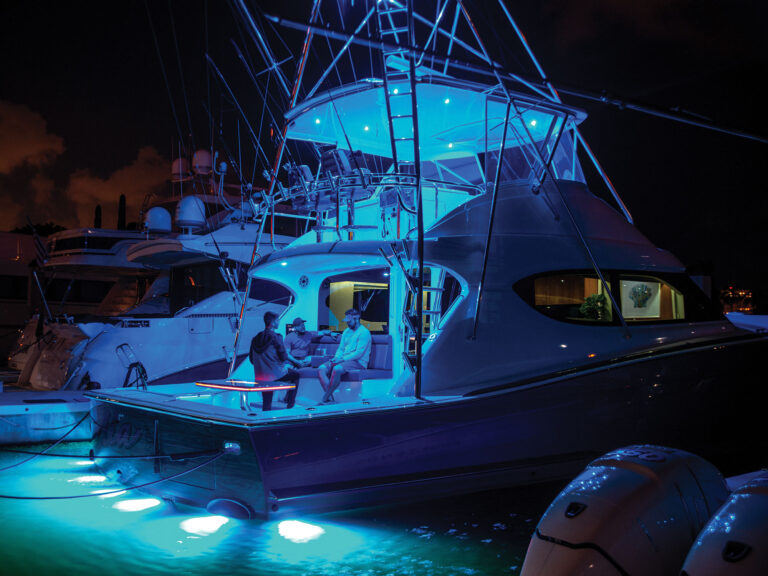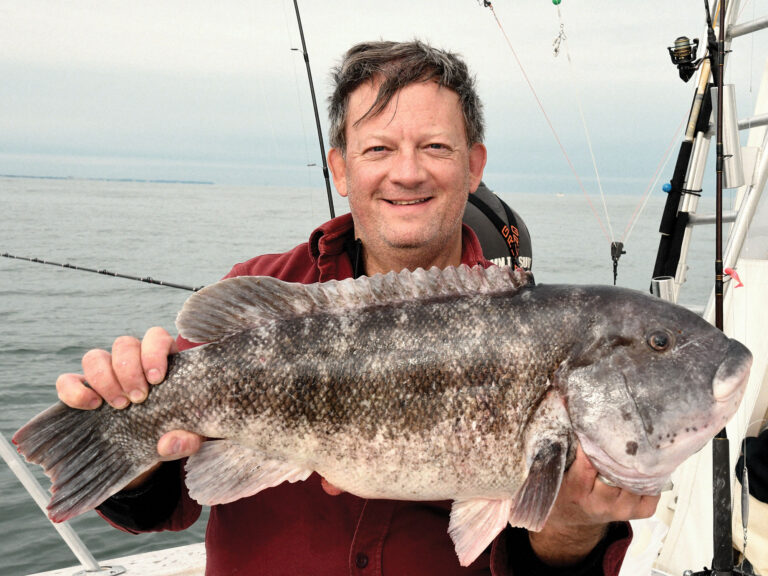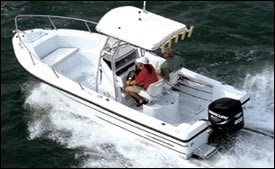
This new 21-footer is a conventional center console at first glance, with a large storage box forward, four fishboxes in the deck, and aft storage compartments. The fishboxes drain right through holes in the boat’s hull, and have plugs to keep water out when the boxes are in use. The boat’s design is simple, with plenty of storage and lots of uncluttered space.
For instance, a cooler serves as the forward console seat, and the console itself has an acrylic wraparound windshield with a handrail, drink holders, and a large box where you can mount quite a few electronics. The twin pedestal seats sit atop a large box that contains a 120-quart live well, and it’s obvious the boat was designed with fishermen in mind. You might pass it off as just another 21-foot center console, but that would be a mistake. When you take a close look, you’ll realize that this is a very different boat.
New Hull Material
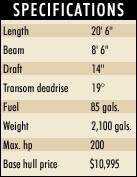
Radical changes in boat-building technology don’t come along very often. The last one occurred in the early 1950s, when fiber-reinforced plastic (fiberglass) appeared on the scene and began to replace wood as the boat-building material of choice. The vast majority of recreational fishing boats are now built of fiberglass, of course, although wood and aluminum are still around.
Logic Boats, a subsidiary of Genmar Industries, believes it has come up with the next paradigm shift in the way boats are built. Logic has taken technology developed in the canoe and kayak industry and applied it to the construction of fishing boats. Logics are made, not of fiberglass, but of roto-molded marine-grade polyethylene plastic, through a process called Roplene construction.
The process involves a technique called rotational molding in which thermoplastic polyethylene pellets approximate consistency of sugar. The powder is poured into a metal mold, usually stainless steel or aluminum, which is loaded into a large oven that is heated to 500 to 600 degrees Fahrenheit.
Rock & Roll!
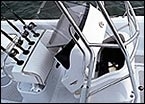
The mold then begins to move along several axes, rotating and rocking through a 70- to 110-degree arc. Engineers call this process “rock-and-roll rotational molding.” This motion makes the powdered plastic tumble around inside of the mold, distributing it evenly. As the interior of the metal mold gets hotter, the plastic begins to melt, and each revolution of the mold deposits another layer of plastic, which in turn melts and provides a sticky surface for yet another layer of plastic to cling to.
This continues until all of the powdered plastic is melted and evenly distributed throughout the mold. The “cook” cycle is controlled by computers, which closely monitor variables such as temperature, speed, angle and orientation of the mold within the oven. Once the cook cycle is complete, a cooling phase begins, with the mold continuing to rotate until it cools sufficiently.
An interesting phase of the cooling process concerns shrinkage. As the boats cool, they shrink approximately three percent, so a 17-foot boat starts out almost six inches longer than it ends up. It’s critical to manage this shrinkage so that machined components such as floors, hatches and panels will fit properly, so Logic came up with an innovative solution. It developed an articulated cooling jig that actually moves with the boat during the final stages of cooling stage and has built-in stops at predetermined points that regulate the final dimensions of critical areas.
Lifetime Hull Warranty
Logic also had structural issues to deal with, because while polyethylene has incredible impact resistance, it is also quite flexible and needs lots of additional stiffening. Oversized stringers, significantly larger than those in a comparably sized fiberglass boat, are molded into the deck portion of the mold, providing exceptional longitudinal stiffness. The stringers are completely bonded to the hull itself during the heating process, resulting in a boat that comes out essentially in one rugged piece. The folks at Logic have such confidence in the process that they offer a limited lifetime hull warranty that can even be transferred to a second owner.
The planet benefits from the rotational molding process, too, because the release of volatile organic compounds (VOCs) that is such a problem with fiberglass construction is completely eliminated. No emissions and very little waste are produced, and the boat is even recyclable! That’s a claim no fiberglass boat builder can make.
Genmar Logic LLC, Durham, NC; (919) 382-3149; www.logicboats.com

